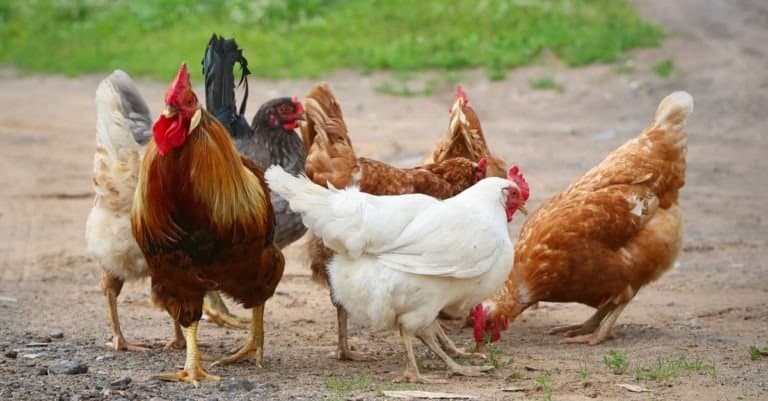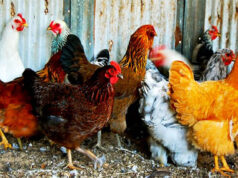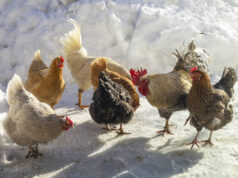Understanding how chickens get Marek’s disease is crucial for poultry enthusiasts. Marek’s disease is one of the most common diseases affecting chickens worldwide, caused by a herpesvirus. This in-depth guide will shed light on how chickens contract this disease and provide practical tips to help keep your flock healthy.

What is Marek’s Disease?
Marek’s disease is a type of avian cancer caused by the Marek’s disease virus (MDV), a highly contagious herpesvirus. It primarily affects the chicken’s nerves, causing paralysis and tumors in organs such as the liver, spleen, and kidneys.
Types of Marek’s Disease
There are four main forms of Marek’s disease:
- Cutaneous Marek’s Disease
- Neurological Marek’s Disease
- Ocular Marek’s Disease
- Visceral Marek’s Disease

How is Marek’s Disease Spread?
The disease is transmitted primarily through feather debris and dander from infected birds. This virus is highly resilient and can survive outside the host for several months.
Transmission Through Direct Contact
One way the disease spreads is through direct contact with an infected bird. It spreads when healthy birds peck feathers and skin of an affected chicken.
Transmission Through Indirect Contact
The virus can also spread indirectly. This happens when chickens come in contact with contaminated surfaces or are exposed to the virus through dust particles in the air.

Symptoms of Marek’s Disease
Recognizing the symptoms of Marek’s disease early can help in managing it more effectively.
Initial Symptoms
Initial symptoms of Marek’s disease include lethargy, weight loss, and poor growth rate. Chickens might also appear listless and have reduced appetite.
Advanced Symptoms
Advanced symptoms include paralysis of the wings and legs, vision impairment, and the formation of tumors. It’s essential to diagnose and manage these symptoms early to give your chickens the best chance of recovery. Disease symptom

Diagnosing Marek’s Disease
Proper diagnosis is crucial for effective management of Marek’s disease. Consulting with a veterinary professional is highly recommended for an accurate diagnosis.
Clinical Examination
A clinical examination may include checking for neurological signs, visible tumors, and other clinical symptoms.
Laboratory Tests
Laboratory tests such as PCR (Polymerase Chain Reaction) can also help in confirming the presence of MDV in the affected bird.
Preventing Marek’s Disease
Prevention is the key to controlling Marek’s disease in your flock. Implementing biosecurity measures and regular vaccinations can go a long way.
Vaccination
Administering Marek’s disease vaccine to day-old chicks can significantly reduce the incidence of the disease. The vaccine is usually administered via subcutaneous injection.
Biosecurity Measures
Maintaining strong biosecurity measures is crucial. This includes keeping the coop clean, preventing exposure to wild birds, and isolating new or sick birds. Learn more about how long it takes from Marek’s Disease.
Treatment for Marek’s Disease
Unfortunately, there is no cure for Marek’s disease. However, supportive care can help manage the symptoms and improve the quality of life for affected chickens.
Supportive Care
Supportive care may include providing a stress-free environment, high-quality feed, and supplements to boost the immune system. Affected chickens should be isolated to prevent the spread of the virus.
Antiviral Medications
Though not always effective, some antiviral medications might help in managing the symptoms to some extent. Consult with your vet for appropriate medication options.
Feeding Practices for Infected Chickens
Proper nutrition is vital for chickens infected with Marek’s disease.
High-Quality Feed
Providing high-quality feed rich in protein, vitamins, and minerals can help improve overall health and support the immune system.
Supplements
Supplements such as probiotics, vitamins, and minerals can also be beneficial in managing the symptoms of Marek’s disease.
Impact of Marek’s Disease on Your Flock
Understanding the impact of Marek’s disease on your flock can help in implementing effective management practices.
Mortality Rate
Marek’s disease has a high mortality rate, especially in young birds. Early vaccination and biosecurity measures are crucial for reducing losses.
Economic Impact
The disease can lead to significant economic losses due to reduced productivity, increased healthcare costs, and higher mortality rates.
Long-term Management of Marek’s Disease
Long-term management strategies are essential to control the spread and impact of Marek’s disease.
Regular Monitoring
Regular monitoring of your flock for symptoms of Marek’s disease is vital. Early detection can help in managing the disease more effectively.
Maintaining a Healthy Flock
Maintaining a healthy flock involves providing proper nutrition, regular vaccinations, and implementing strong biosecurity measures.
Conclusion
Understanding how chickens get Marek’s disease and implementing effective prevention and management strategies can significantly reduce the impact of this disease on your flock. For more information related to chicken care, visit PetMD.
FAQs
Is there a cure for Marek’s disease?
Unfortunately, there is no cure for Marek’s disease. Supportive care and vaccination are the best ways to manage the disease.
Can Marek’s disease be prevented?
Yes, Marek’s disease can be prevented with proper vaccination and biosecurity measures.
How is Marek’s disease diagnosed?
Marek’s disease is diagnosed through clinical examination and laboratory tests such as PCR.
As an Amazon Associate, I earn from qualifying purchases.










